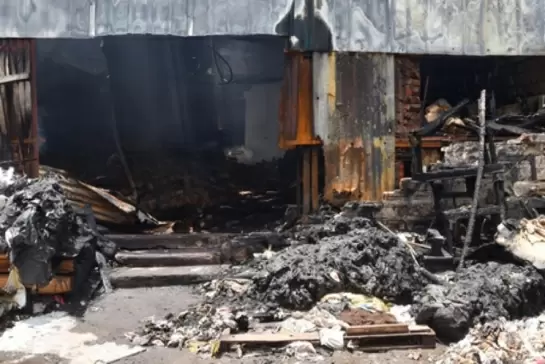No possibility of a massive heavenly body colliding with earth: U R Rao

13-January-2012
Vol 0 | Issue 1
Several soothsayers, tarot card readers, astrologers and psuedo scientists have forecast that our earth will face a terrible catastrophe and meet its Doomsday on December 21, 2012, because this date happens to be the end date of the 5125 year cycle of Mesoamerican Long Count calendar.
The doomsday predictors believe that the destruction of the earth will be caused by its collision with a black hole, asteroid, comet or some unknown global event. Similar predictions have been made in the past scaring the gullible public, even though all such pronouncements turned out to be hoaxes.
Cores of massive stars exceeding about five times the mass of the Sun, can end up as compact dense black holes having a diameter of about 10 km but extraordinary density well above 50 billion tons/cc, which prevents even light from escaping their surface. Black holes will no doubt capture all nearby matter such as stars, gas or dust, which fall within their sphere of gravitational influence.
Any black hole colliding with the Sun or even passing near it will surely gobble up the entire solar system including the earth. However, our Sun is located in the arm of our Milky Way Galaxy disk, over 28,000 light years (one light year ~ 9500 billion km) away from even the nearest black hole located at the centre of our galaxy and consequently any black hole colliding with our Sun can be totally ruled out.
However, asteroids, comets or other Near Earth Astronomical Objects (NEOs) colliding with the earth is indeed a remote possibility. The largest of such impacts, which occurred 65 million years ago, caused extinction of almost 60 per cent of life on our earth, including dinosaurs.
Extensive studies carried out by a number of scientists supported by the International Academy of Astronautics and other scientific organisations across the world clearly indicate that majority of NEO impacts on the earth are so small that they do not pose any danger. However, large astronomical bodies colliding with the earth, though rare, can cause severe damages.
Earth’s collision with NEOs exceeding six km in diameter, like the one which wiped out dinosaurs, can indeed be catastrophic, even though the frequency of such an impact is only one in every 100 million years. The impact of NEOs having 1-6 km diameter with an estimated frequency of one in a million years could cause heavy damage regionally.
The impact frequency of NEOs having a diameter of about 300 metre which can cause localised damage is one in 10,000 years. NEOs having a diameter of about 50 m or less will not penetrate earth’s atmosphere, even though their average frequency of impact is one in 100 years.
Recognizing the danger of chance collision of large NEOs with the earth – even though such chances are very low – international mechanisms have been set up to continuously track and catalogue the origin, size and trajectory of all Near Earth Objects of diameter exceeding one kilometre. Detailed characterisation of 80 per cent of the total of 1100 such NEOs in orbit has already been completed with the remaining 20 per cent expected to be mapped in the next two years.
In addition, details of all NEOs in the diameter range of 140 m–1 km, which may cause some local damage to the earth by collision, are also expected to be catalogued before 2020. Relevant information on all NEOs gathered by the participating NEO observing stations is passed on to the International Minor Planet Center at the Smithsonian Astrophysical Observatory, Cambridge, which has the responsibility to compute detailed trajectories and all technical parameters of each NEO for world wide dissemination.
Additionally, space scientists have also carried out detailed studies for identifying appropriate scientific methods to protect the earth against the catastrophic impact of NEO’s, either by slightly altering their in-fall trajectory or even by destroying them as they approach the earth using kinetic impact, nuclear or other destruction methods.
The only catastrophe that cannot be avoided is the ultimate death of our Sun after it burns out all its fuel. However, detailed calculations based on extensive observations indicate that our Sun will continue to burn and shine in the sky for at least the next 5000 million years, which means that the probability of our earth or the solar system facing doomsday catastrophe from any major calamity is practically nil for a long time to come.
It is indeed a tragedy that many people continue to believe in the absurd predictions and irresponsible mumbo-jumbo in spite of the fact that there is absolutely no scientific justification of such predictions. The prediction of Doomsday or “Pralaya” destroying the earth and its inhabitants in December 2012 is totally false, mischievous and unfounded.
(The views expressed by the author, who is a former chairman of ISRO, are personal)
By arrangement with The Sunday Indian















